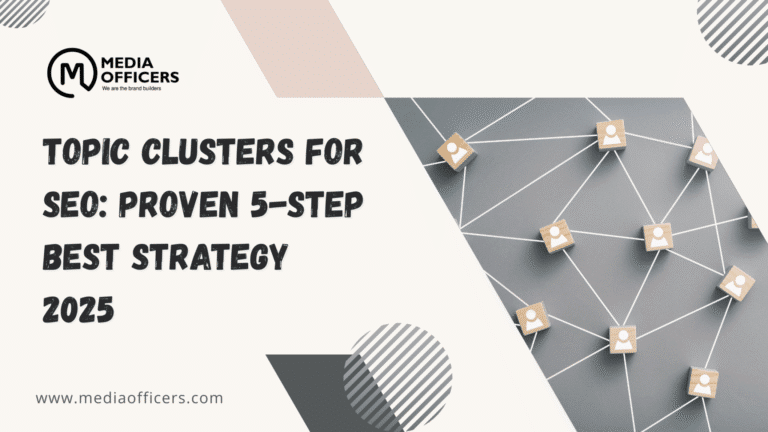Content Marketing Strategy is the backbone of modern digital growth. This guide reveals a practical, step-by-step framework to craft a plan that aligns with your business goals, resonates with audiences, and delivers measurable results.
What is a Content Marketing Strategy and Why It Matters
A Content Marketing Strategy defines how you create, publish, and promote content to attract and retain a clearly defined audience. It aligns marketing activities with business goals, clarifies your value proposition, and helps you measure success. When you have a well-crafted Content Marketing Strategy, you can move from random posts to intentional, high-impact storytelling that drives inquiries, contacts, or sales.
Below the surface, a robust Content Marketing Strategy serves as a north star for all content initiatives. It guides resource allocation, prioritizes topics with the highest potential impact, and creates a repeatable process that scales as your team grows. By documenting a clear content strategy, you reduce wasted effort and accelerate learning through data-driven iterations.
Analyze Search Intent & Keywords for Your Content Marketing Strategy
People search for solutions like how to build a content plan, how to measure content impact, or how to align content with sales goals. Understanding search intent helps you tailor your Content Marketing Strategy to informational, navigational, and transactional queries. Start with a primary focus keyword (Content Marketing Strategy) and map 3–4 secondary, related keywords such as content marketing plan, content strategy, content calendar, and audience personas to support long-tail growth.
Practical steps to align intent with your Content Marketing Strategy include: creating topic clusters around core subjects, testing headlines for intent, and ensuring every asset has a clear conversion objective. By embedding the primary keyword and its related terms naturally, you improve relevance across search engines while preserving reader trust.
Define Goals, Audiences & Value Propositions
Before production, set SMART goals that connect content output to business results. Examples include increasing qualified leads by 20% in six months, boosting email signups by 15%, or growing organic traffic to pillar content by 30%. Build audience personas that reflect your ideal customers, decision-makers, and influencers within the buying committee. Your Content Marketing Strategy should articulate distinct value propositions for each persona and guide how content moves them from awareness to consideration to conversion.
To make goals actionable, assign owners, timelines, and success metrics for every content initiative. This clarity prevents scope creep and ensures accountability. When your Content Marketing Strategy ties to product goals, marketing automation, and sales enablement, you create a cohesive engine that compounds over time.
Audit Your Existing Content to Inform Your Strategy
Start with a comprehensive inventory of every asset you’ve produced in the last 12–24 months. Audit for quality, relevance, performance, and alignment with buyer personas. Map each asset to a buyer stage and a keyword focus. A thorough content audit reveals gaps, opportunities, and quick wins like updating evergreen posts, consolidating similar articles, or repurposing top-performing content into a content calendar of new formats.
During the audit, identify content that established authority or generated social proof, and plan to refresh or repurpose it. This process strengthens your Content Marketing Strategy by grounding it in real performance data rather than assumptions. Don’t overlook low-cost repurposing opportunities, such as turning a webinar into a blog series or a case study into a slide deck for partnerships.
Build the Content Marketing Strategy Framework
The framework rests on three pillars: topics (content pillars), audience signals, and distribution channels. Create topic clusters around core subjects that matter to your audience and align them with your business goals. Choose content formats that fit each stage of the journey blog posts, videos, podcasts, infographics, and case studies. This Content Marketing Strategy framework helps you publish consistently and capture the search signals that support your content strategy.
Key steps to build the framework include: identifying 3–5 pillar topics, outlining 5–7 supporting subtopics per pillar, and selecting primary and secondary keywords for each cluster. Map metrics for each content type (e.g., video completion rate for videos, dwell time for long-form guides). By designing with structure in mind, your Content Marketing Strategy becomes scalable and easier to optimize.
Editorial Planning: The Content Calendar and Workflow
A practical editorial plan keeps teams aligned and deadlines predictable. Your Content Marketing Strategy should include a content calendar that lists topics, formats, owners, publishing dates, and distribution channels. Key workflow steps:
- Idea intake and approval
- Research and outline
- Drafting and internal review
- Editing and optimization
- Publishing and promotion
Consistency matters. A quarterly review of the content calendar ensures topics stay relevant and aligned with evolving business priorities. In addition, tie each piece to a specific channel and conversion goal to maximize impact. Consider integrating a reminder system for repurposing content after an initial publish cycle to optimize lifecycle value.
Content Creation, Distribution & Promotion
Creating compelling content is only half the battle. You must distribute it where your audience spends time. A mature Content Marketing Strategy integrates content creation with distribution channels such as owned media (your site and email list), social platforms, partnerships, and media outreach. Your content marketing plan should specify how each asset will be repurposed across channels and formats to extend reach while maintaining a coherent content strategy.
Practical guidance:
- Repurpose one pillar piece into a micro-post, a video script, and an infographic.
- Publish consistently on a cadence that suits your team and audience.
- Leverage email workflows to nurture readers through the funnel.
- Experiment with paid amplification on high-intent topics to accelerate momentum.
SEO, On-Page Optimization & Technical Considerations
SEO is not an afterthought in a modern Content Marketing Strategy. Align on-page optimization with your SEO content strategy by optimizing titles, meta descriptions, headers, and internal links for your primary keywords and LSI terms. Ensure fast-loading pages, mobile-friendly design, accessible images, and structured data where appropriate. A solid SEO framework helps your Content Marketing Strategy earn visibility without sacrificing reader experience.
Important practices include: crafting compelling meta descriptions that mirror user intent, using descriptive header hierarchies, and ensuring logical internal link structure. Regular technical audits prevent crawl issues and preserve crawl budget, which in turn supports your content strategy and long-tail growth. By combining strong content with robust technical SEO, your Content Marketing Strategy gains sustainable organic visibility.
Measurement, Analytics & Iteration
Capture both output metrics (posts published, word count, media formats) and outcome metrics (traffic, engagement, conversions, revenue). Your Content Marketing Strategy should define key performance indicators (KPIs) and a dashboard that tracks progress over time. Use experiments to test headlines, formats, and channels, then iterate based on evidence to sharpen your content strategy.
Effective measurement requires a feedback loop: collect data from analytics, user feedback, and sales input; analyze what worked; refine topics, formats, and distribution tactics; then re-deploy updated assets. Over time, this iterative approach compounds results and strengthens the relevance of your Content Marketing Strategy.
Governance: Roles, Guidelines & Collaboration
Successful execution requires clear roles, approval processes, and quality standards. Define who owns content strategy decisions, who approves what, and how revisions are handled. A published Content Marketing Strategy policy helps teams stay aligned, maintain brand voice, and sustain momentum across campaigns. Establish a tone guide, visual standards, and a documented process for rapid iteration.
Fostering cross-functional collaboration between marketing, product, design, and sales ensures your Content Marketing Strategy remains practical and impactful. Regular standups, shared dashboards, and a centralized content repository reduce friction and accelerate delivery of high-quality content.
Frequently Asked Questions
What is a content marketing strategy?
It is a plan that defines how your organization creates, distributes, and measures content to attract and convert a target audience, aligned with business goals.
How long does it take to see results from a content marketing strategy?
Most teams begin to see meaningful signals within 3–6 months, with compound growth as you publish consistently and optimize based on data.
What are the essential metrics to track?
Traffic, engagement (time on page, pages per visit), lead quality, conversion rate, and revenue are core indicators of a successful Content Marketing Strategy.
What tools help implement a content marketing strategy?
Content management systems, analytics platforms, SEO tools, and a collaborative editorial calendar are foundational for any Content Marketing Strategy.
Conclusion
With a clear Content Marketing Strategy in place, you can move from scattered publishing to deliberate, data-driven storytelling that resonates with your audience and grows your business. Start by defining goals, mapping content to buyer journeys, and building a repeatable workflow supported by a robust content calendar. As you test, learn, and optimize, your Content Marketing Strategy will become a competitive advantage that fuels sustainable growth.





